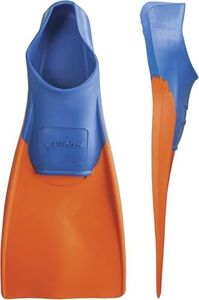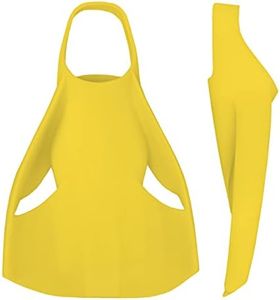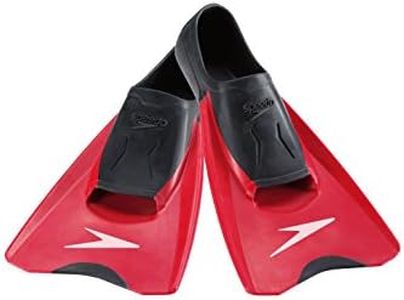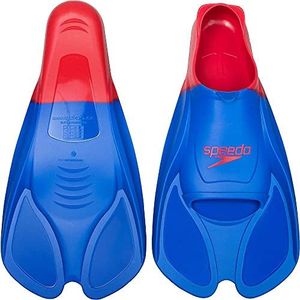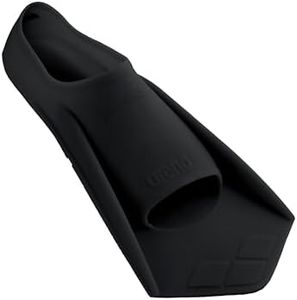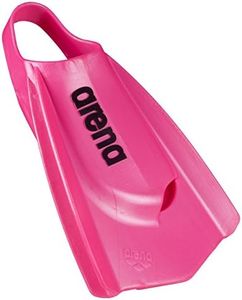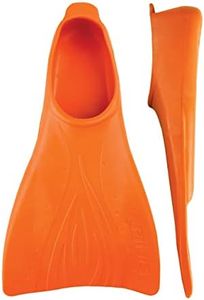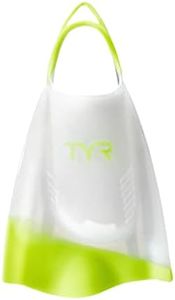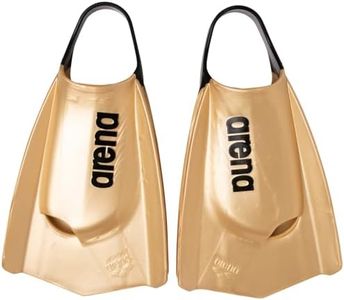We Use CookiesWe use cookies to enhance the security, performance,
functionality and for analytical and promotional activities. By continuing to browse this site you
are agreeing to our privacy policy
10 Best Swim Training Fins
From leading brands and best sellers available on the web.Buying Guide for the Best Swim Training Fins
Choosing the right swim-training fins can make a big difference in your swimming workouts, whether you’re training for speed, technique, or simply to improve your cardiovascular fitness. The right fins can help you build strength and confidence in the water, but picking the best match requires a basic understanding of your goals and how the fins’ features affect performance. To make the best choice, it's important to know how each key specification impacts comfort, training effectiveness, and suitability for your swimming style.Blade LengthBlade length refers to how long the fin's extension is beyond your toes, and it greatly affects resistance and the type of training you can do. Short blades are best for developing kick frequency and technique, making them ideal for those focused on sprinting, technique drills, or swimmers who want a more natural flutter kick. Medium-length blades strike a balance between technique and power, suitable for all-around training. Long blades provide more resistance, making them good for strength building and conditioning, but they encourage slower, larger kicks. Your training goals and swimming style should guide your choice: choose shorter blades for speed and technique, or longer blades if you want to build leg strength.
Material FlexibilityMaterial flexibility reflects how soft or stiff the fins are when you bend them. Flexible fins are easier on your ankles and provide a more natural kick, often recommended for beginners or for technique-focused swimmers. Stiffer fins offer more resistance and are effective for building power, but they may be harder on your joints during long sessions or for those with limited ankle flexibility. Think about your experience level and physical needs—if comfort and injury prevention are your top priorities, go for softer, more flexible fins; if you're after strength and power, you can opt for a stiffer design.
Foot Pocket FitThe foot pocket is the part of the fin where your foot sits, and a good fit is essential for comfort and for preventing blisters or chafing during long swims. Some fins have a closed heel (enclosing the foot), while others have an open heel with a strap. Closed heel pockets feel snug and streamlined, suitable for pool training and those who prefer a more secure fit. Open heel designs allow for more sizing flexibility and can be better for sharing between swimmers or for those with wider feet. Try to find fins that fit snugly but aren't too tight, considering the shape and size of your feet as well as your personal comfort preferences.
BuoyancyBuoyancy refers to whether the fins float, sink, or are neutral in water. Floating fins can help keep your legs higher in the water, promoting proper body position—this is helpful for newer swimmers or those who have trouble maintaining a horizontal position. Sinking or neutrally buoyant fins offer a more natural leg position for experienced swimmers or those focusing on specific technique drills. If you want extra help with your position, consider floating fins; if you want to closely mimic your natural swim mechanics or focus on strength, neutrally buoyant or sinking fins might be best.
Fin ShapeFin shape includes features like the width, taper, and if the blade is split or solid. Wider blades offer more surface area and resistance, increasing strength training, while narrower blades reduce drag for technique work. Some fins have a split design, making them more flexible and mimicking a natural dolphin kick, good for those focused on developing an efficient kick. Solid, traditional shapes are best for power. Think about your swim stroke and training aims—if you prioritize technique and a natural movement, consider split or more streamlined blades; if you want a challenging workout, go for wider, solid blades.
